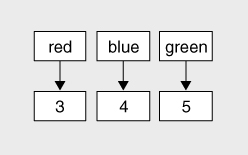XSLT 2.0 and XPath 2.0 Programmer's Reference, 4th Edition (442 page)
Read XSLT 2.0 and XPath 2.0 Programmer's Reference, 4th Edition Online
Authors: Michael Kay

BOOK: XSLT 2.0 and XPath 2.0 Programmer's Reference, 4th Edition
8.74Mb size Format: txt, pdf, ePub
for $x in $SEQ return F($x)
where F($x)
F($x) represents any expression that depends on
represents any expression that depends on
$x
(it doesn't have to depend on
$x
, but it usually will).
What this does is to evaluate the expression F($x)
F($x) once for each item in the input sequence
once for each item in the input sequence
$SEQ
and then to concatenate the results, respecting the original order of the items in
$SEQ
.
In the simplest case, the return expression F($x)
F($x) returns one item each time it is called. This is illustrated in
returns one item each time it is called. This is illustrated in
Figure 10-1
, where the function F($x)
F($x) in this example is actually the expression
in this example is actually the expression string-length($x)
string-length($x) .
.
We say that the expression for $x in $SEQ return string-length($x)
for $x in $SEQ return string-length($x) maps
maps
the sequence “red”,“blue”,“green”
“red”,“blue”,“green” to the sequence
to the sequence 3,4,5
3,4,5 .
.
Other books
The Greek Billionaire's Secret Baby (Contemporary Romance) by Michele Dunaway
Trophy for Eagles by Boyne, Walter J.
Corrupting Dr. Nice by John Kessel
The Serial Killer Files by Harold Schechter
Nightmare City by Klavan, Andrew
The Returners by Washburn Jr, Thomas
Faith In Love by Liann Snow
Stay: Vignettes & Outtakes by Moriah Jovan
Dead Man Docking by Mary Daheim
Entwined by Elizabeth Marshall
